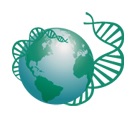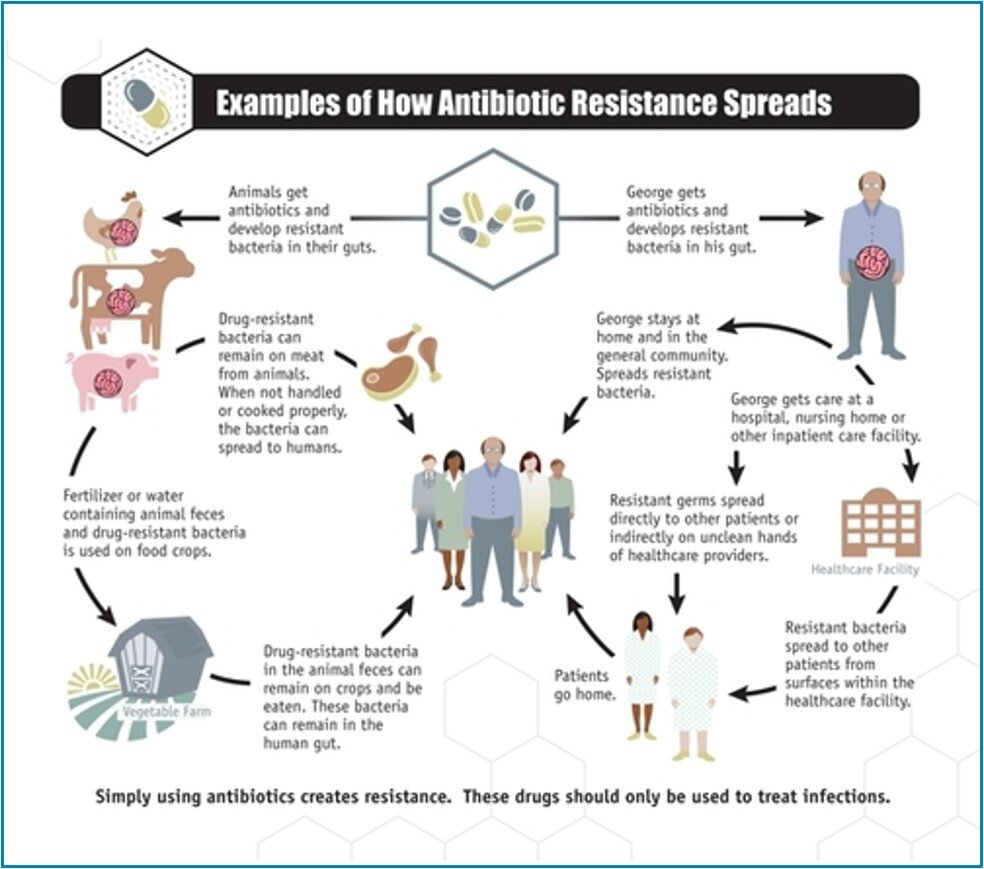Science of Resistance: Ecology
The Role of Bacteria
Bacteria are microorganisms that are found on our skin, in our digestive tract, in the air, in soil, and on almost all the things we touch every day. Most are harmless (non-pathogenic). Many are helpful because they occupy ecological niches (both within our bodies and in the external environment) that could be occupied by harmful (pathogenic) bacteria. These helpful strains keep harmful microorganisms in check. They also help our digestion to function effectively and stimulate the development of a healthy immune system.
The Use of Antibiotics
Antibiotics used to treat infections are an invaluable tool, and their introduction revolutionised the treatment of infectious disease. However, in addition to being used to treat human disease, they have other applications. In the United States, roughly half are used in non-human applications. Large amounts are employed in both plant and animal farming. In animals, antibiotics are used to prevent infection as well as to treat disease. Smaller doses are added to animal feed to promote growth. Antibiotics, chiefly streptomycin and oxytetracycline, are used to control bacterial infections of fruits and vegetables. Because of their wide-spread use, it is not surprising that antibiotics have been found in liquid waste at animal feedlots, and have spread into many surface and ground water supplies.
Antibacterial Resistance and the Environment
The ubiquitous presence of antibiotics has upset the delicate balance of microorganisms in the environment. Over millions of years, bacteria have evolved a number of strategies to coexist peacefully, including the capacity to produce antibiotics to ward off competitors. Other organisms have an ability to destroy these substances programmed into their genetic makeup, and having this capacity, are said to be antibiotic resistant. Both types have always existed. However, before the wide-spread use of antibiotics, resistant strains were a small fraction of the microorganism ecosystem. Significant change has occurred with the large scale human uses of antibiotics because these substances kill off antibiotic susceptible bacteria, and thus create favourable environments for the overgrowth of resistant strains.
As antibiotics become more widely used, resistant strains of both harmful and harmless bacteria are replacing antibiotic susceptible bacteria. Furthermore, resistant bacteria in one environment may not be confined to that specific environment, but can be carried thousands of miles away by wind, water, animals, food, or people. And, most importantly, antibiotic resistant organisms that develop in animals, fruits, or vegetables can be passed to humans through the food chain and environment. All of these factors have had the effect of changing the balance between antibiotic susceptible and the antibiotic resistant bacteria in our ecosystem, locally and globally.
Future Implications of Antibacterial Resistance
Further compounding the problem is that harmless bacteria with resistance genes can transfer these genes to pathogenic bacteria that enter the same environment. The genetic elements that are transferred often carry factors that impart resistance to more than one type of antibiotic. When such genetic elements are transferred, they create "superbugs" that are resistant to many distinct antibiotics. More and more frequently, we are seeing outbreaks of dangerous infections caused by such superbugs. Over the past few decades, the use of antibiotics has enabled us to control many serious infectious diseases. However, as resistant strains become more widespread due to natural and inevitable evolutionary adjustments, antibiotics will cease to be the effective tool they have been for physicians and patients to control infectious diseases.
Antibiotics kill more than the disease-causing bacteria to which they are directed. They kill any other susceptible bacteria. Once the ecosystem is cleared of susceptible bacteria, resistant bacteria can multiply and dominate the environment due to lack of competition. The phenomenon can be likened to weeds that have overgrown a lawn where the grass has been completely destroyed by an overdose of herbicides (Illustration by Bonnie Marshall, from The Antibiotic Paradox, 2nd edition by Stuart B. Levy).
For a more scientific overview, please read the article Antibiotic Resistance: An Ecological Imbalance from APUA President Dr. Stuart Levy.



